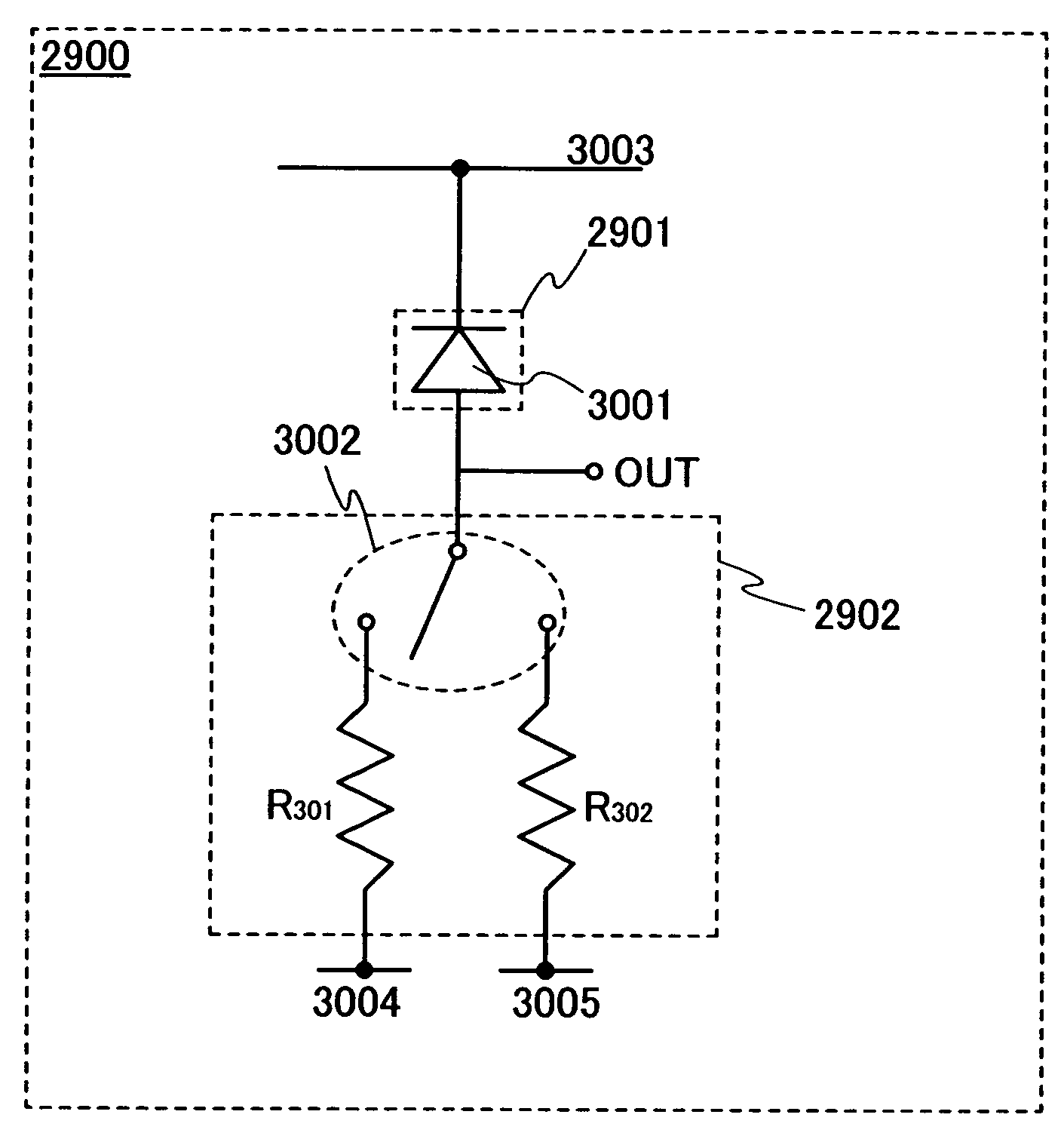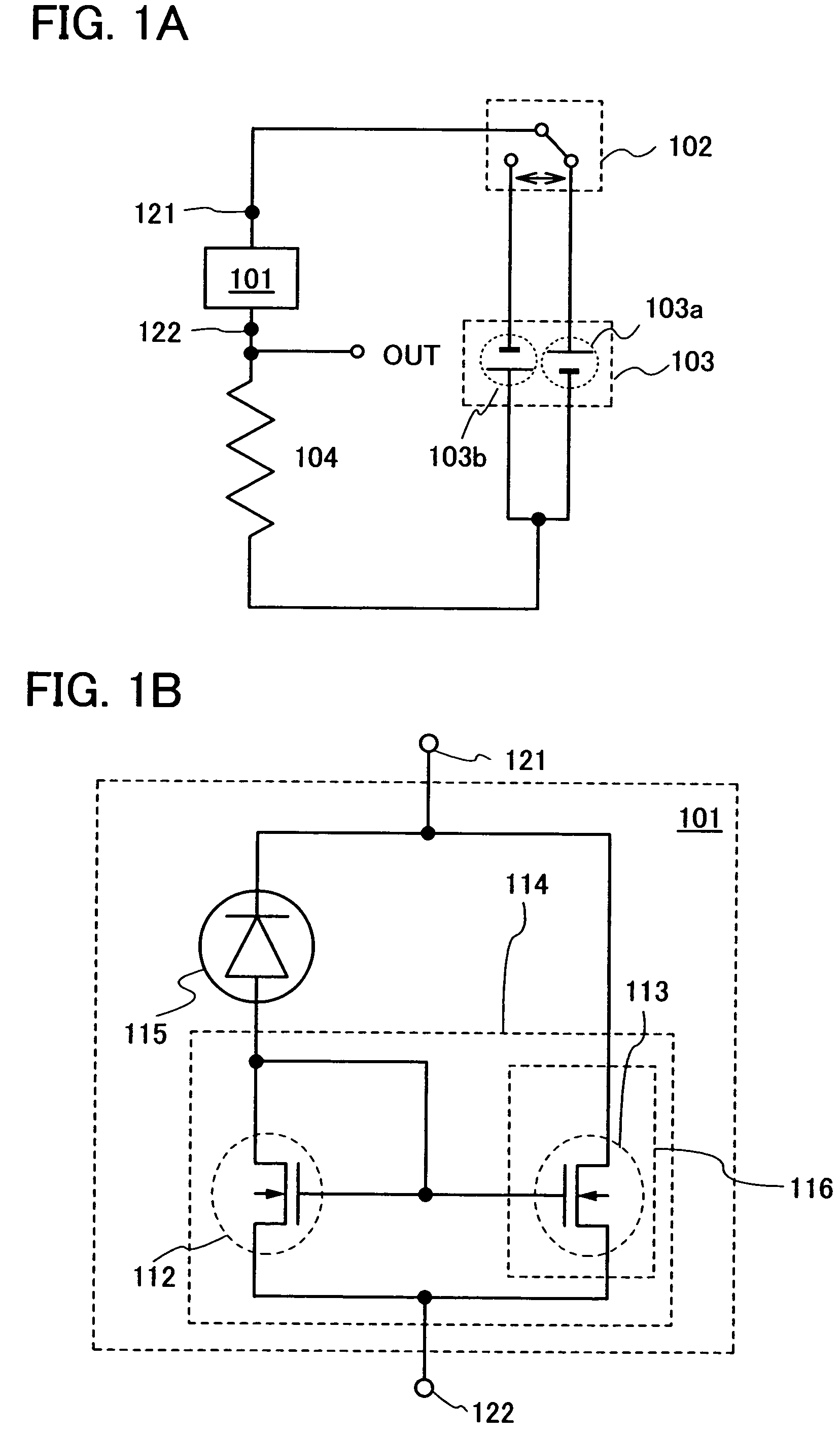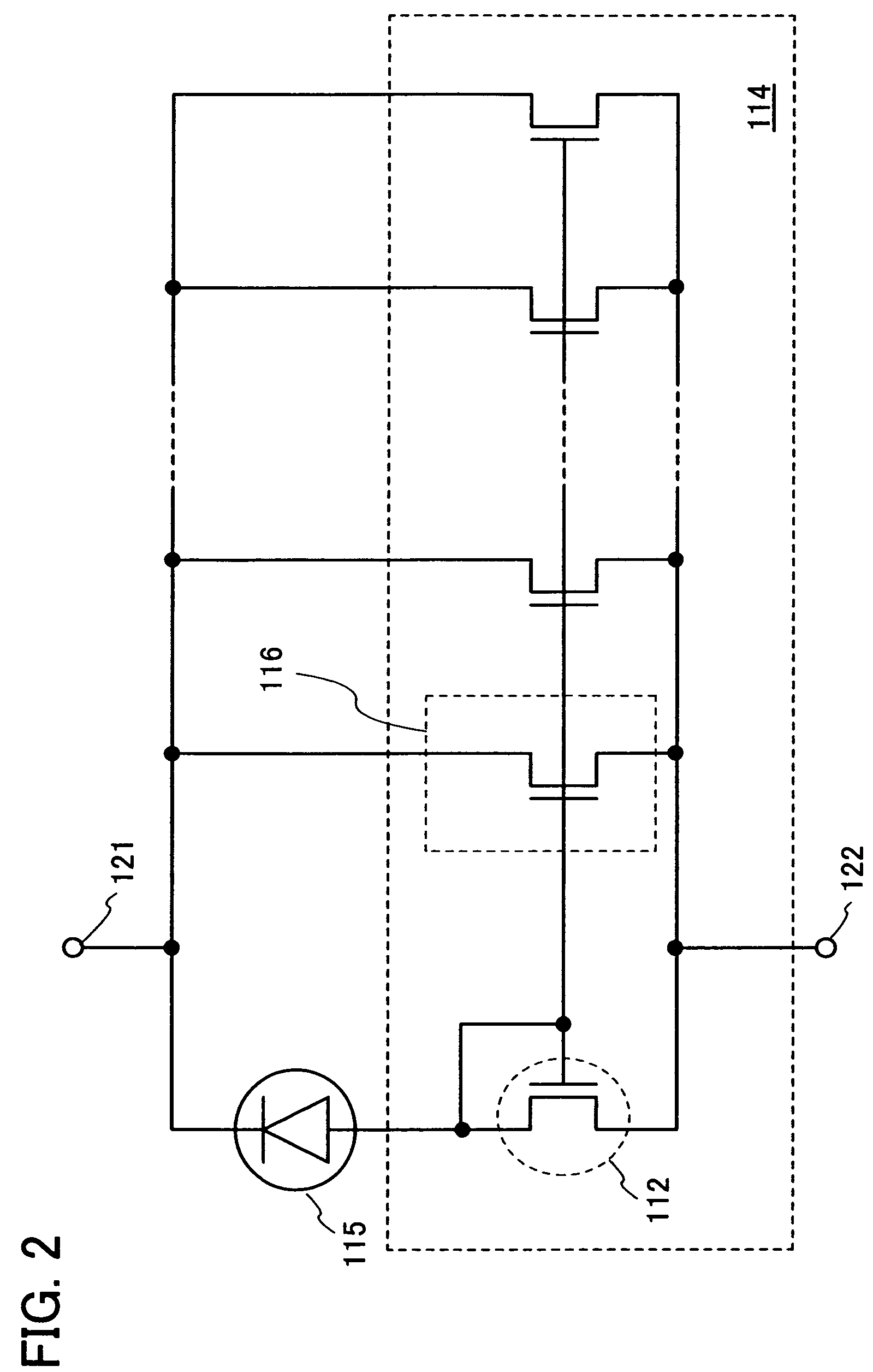Semiconductor device
a technology of semiconductors and semiconductors, applied in static indicating devices, instruments, material analysis, etc., can solve the problems of low yield, increased power consumption, and inability to easily use optical sensors as photoelectric conversion devices, and achieve low power consumption, small output variation, and high convenience.
- Summary
- Abstract
- Description
- Claims
- Application Information
AI Technical Summary
Benefits of technology
Problems solved by technology
Method used
Image
Examples
embodiment mode 1
[Embodiment Mode 1]
[0148]A photoelectric conversion device in this embodiment mode is described with reference to FIGS. 29 to 35. The photoelectric conversion device in this embodiment mode includes a light detection circuit 2900, an amplifier 2903, a comparison circuit 2904, a reference voltage generation circuit2905, and a control circuit 2906. The light detection circuit 2900 includes an optical sensor 2901 and a current-voltage conversion circuit 2902.
[0149]The light detection circuit 2900 has a function of outputting a voltage signal corresponding to detected illuminance. The optical sensor 2901 has a function of outputting a current signal corresponding to detected illuminance. The current-voltage conversion circuit 2902 includes a current-voltage conversion element and has a function of converting the current signal output from the optical sensor 2901 into a voltage signal. Note that as the optical sensor 2901, a photodiode or a phototransistor can be used. As the current-vol...
embodiment mode 2
[Embodiment Mode 2]
[0226]This embodiment mode is described with reference to FIGS. 1A, 1B, 2, 3A, 3B, 4 to 7, 8A, 8B, 9A to 9D, 10A to 10C, 11A to 11C, 12, and 13. A semiconductor device shown in FIG. 1A includes a photoelectric conversion device 101, a bias switching unit 102, a power supply 103, the terminal OUT, and a resistor 104. The photoelectric conversion device 101 has a thin film integrated circuit including a photoelectric conversion element 115 and thin film transistors (TFTs). The thin film integrated circuit includes at least a current mirror circuit 114 formed of a thin film transistor 113 and a diode-connected thin film transistor 112. Note that in this embodiment mode, each thin film transistor included in the current mirror circuit 114 is an n-channel thin film transistor. In addition, the photoelectric conversion device is also referred to as a photo IC.
[0227]One terminal 121 of the photoelectric conversion device 101 is connected to one electrode of the power sup...
embodiment mode 3
[Embodiment Mode 3]
[0329]In this embodiment mode, a photoelectric conversion device having a structure different from those in Embodiment Modes 1 and 2 and a manufacturing method thereof are described with reference to FIGS. 14A to 14D, 15, 16A, 16B, 17, 18, 19, 20A, 20B, 21A, 21B, 22A, 22B, 23 to 27, 28A, 28B, 36, and 37.
[0330]First, an insulating film 1102 is formed over a substrate 1101. As the substrate 1101, a glass substrate, a quartz substrate, a ceramic substrate, a silicon substrate, a metal substrate, a stainless-steel substrate, or the like can be used. Alternatively, a plastic substrate provided with a silicon film containing oxygen or nitrogen on either side may be used. In this embodiment mode, a glass substrate is used as the substrate 1101.
[0331]As the insulating film 1102, a film may be formed of silicon oxide, silicon oxide containing nitrogen, silicon nitride, silicon nitride containing oxygen, or a metal oxide material by a sputtering method or a plasma CVD metho...
PUM
 Login to View More
Login to View More Abstract
Description
Claims
Application Information
 Login to View More
Login to View More - R&D
- Intellectual Property
- Life Sciences
- Materials
- Tech Scout
- Unparalleled Data Quality
- Higher Quality Content
- 60% Fewer Hallucinations
Browse by: Latest US Patents, China's latest patents, Technical Efficacy Thesaurus, Application Domain, Technology Topic, Popular Technical Reports.
© 2025 PatSnap. All rights reserved.Legal|Privacy policy|Modern Slavery Act Transparency Statement|Sitemap|About US| Contact US: help@patsnap.com



